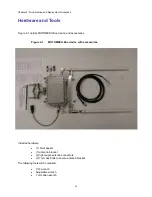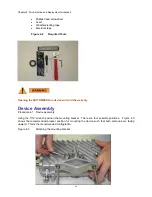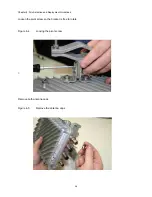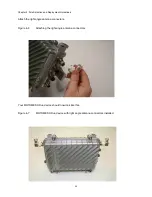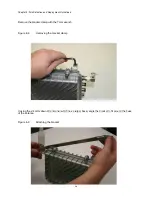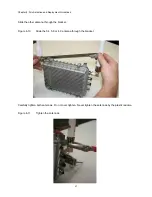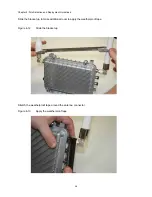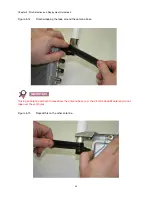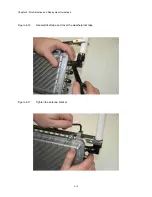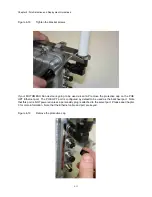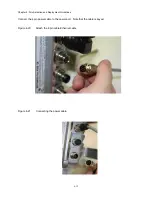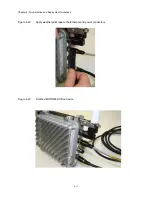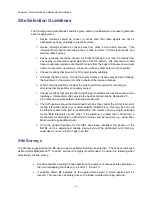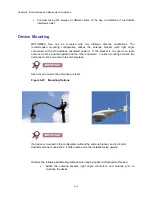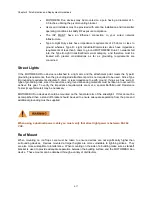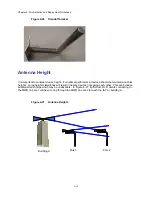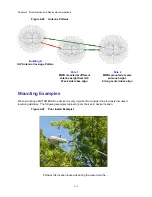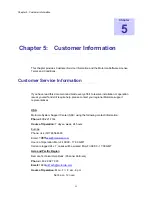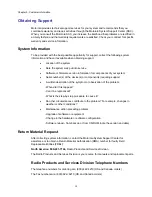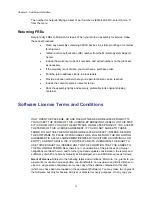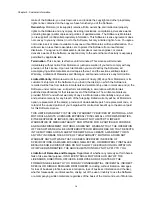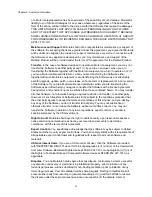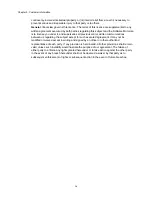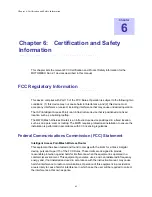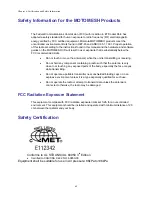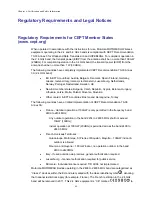
Chapter 4: Site Selection and Deployment Guidelines
Site Selection Guidelines
. . . . . . . . . . . . . . . . . . . . . . . . . . . . . . . . . . . . . . . . . . . . .
.
The following recommendations should be given primary consideration in accessing potential
sites for deployment;
1.
Device locations should be chosen in areas such that radio signals will not be
obstructed by trees, buildings or other structures.
2.
Device locations should be chosen away from other in band radio sources. This
includes other products operating in the 2.4 GHz, 4.9 GHz, 5.X GHz radio bands, and
weather radar sources.
3.
Device locations should be chosen such that antennas are at least 30 inches from
any nearby metal poles to avoid distortion of the RF pattern. The antenna must also
have a separation distance of at least 2 meters from the body of all persons and must
not be co-located or operating in conjunction with any other antenna or transmitter.
4.
Choose locations that have AC or DC power readily available.
5.
Consider the time of year. During the winter months a location may be free of foliage
that will return in the warmer months to obstruct the device antennas.
6.
When choosing locations consider the proper permits required for mounting on
structures that are publicly or privately owned.
7.
Choose locations that provide direct line-of-sight conditions such as those along main
roadways. Intersections often provide the best mounting options. Nominal 0.25 -
0.35 miles line-of-sight between infrastructure devices.
8.
The IAP locations should be determined first since they control the critical function of
routing information back to your wired network infrastructure. This may be done via
an Ethernet cable if the IAP is located within 100 meters (the max length permitted
for standard Ethernet) of each other. If the distance is greater than 100 meters, a
mechanism for extending the Ethernet connection will be required, e.g., using fiber,
Motorola Canopy backhaul radio.
9.
Once the optimal locations for the IAPs have been identified, the location of the
MWRs can be determined. Ideally, devices should be distributed such that any
subscriber is no more than 3 hops to an IAP.
Site Surveys
It is strongly suggested that an RF site survey be performed during site selection. The uses of tools such
as Motorola’s MeshPlanner™ or an RF scanner are highly recommended. Consider the following when
performing your site survey:
•
At each potential mounting location determine the number of access points operating on
the non overlapping channels (e.g. 2.4 GHz 1, 6, and 11).
•
If possible obtain RF samples at the approximate height in which devices will be
located. This can often be safely done with a tripod mounted scanning antenna.
4-15
Summary of Contents for 2.1
Page 2: ...This page intentionally left blank ii ...
Page 4: ...This page intentionally left blank iv ...
Page 10: ...This page intentionally left blank x ...
Page 12: ...This page intentionally left blank xii ...
Page 14: ...This page intentionally left blank xiv ...
Page 59: ...Chapter 3 MOTOMESH Duo Hardware This page intentionally left blank 3 12 ...
Page 86: ...Chapter 5 Customer Information This page intentionally left blank 5 7 ...
Page 123: ......
Page 131: ...Appendix A Figure 9 39 General Settings Tab in the Web User Interface 9 30 ...


